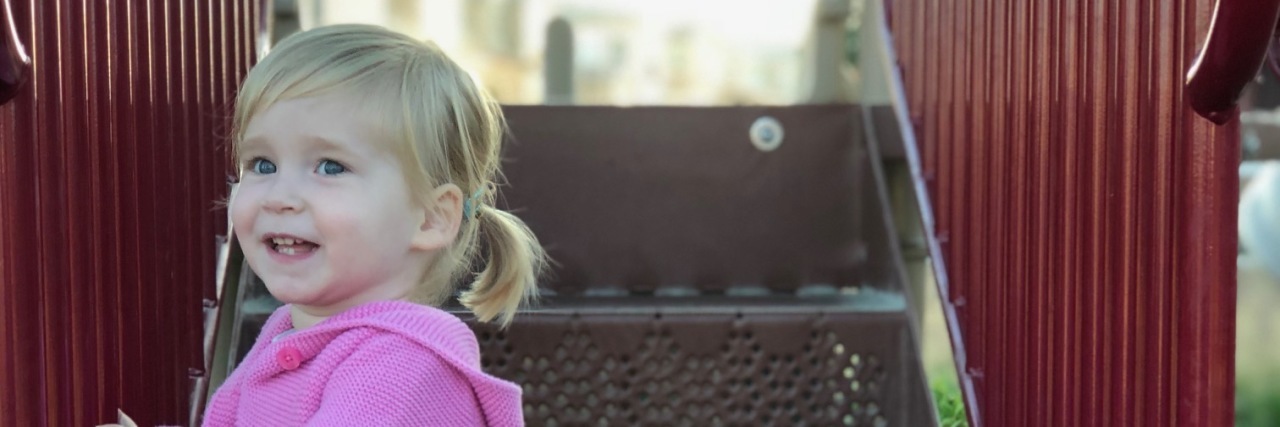My 2-year-old daughter had an ultrasound. Sounds pretty painless, right? If I were to chat with someone casually and they asked what I did today, I’d say, “Marian had an ultrasound this morning,” and if asked how it went, I’d say, “fine.”
But there are so many things those words envelop and hide, ready to be contained and put behind us. Marian’s last ultrasound before this one was the day after we learned she has a fatal disease, Niemann-Pick Type C. After months of seeking answers, here was our answer. Fatal. Ringing through our lives and tearing them apart.
How was your day? It was fine. How was the doctor? Fine. After receiving this blow it really does seem fine, but the new standard for what is “fine” is pretty messed up. If things are hard but we’ve expected it to be, then it’s “fine.”
When we entered the ultrasound room Marian got scared. She shook her head no and cried, clinging to me. She rolled around the bed trying to get off. I sang songs, played music, told stories. She screamed. The monitor was pressed into her abdomen, her infamous enlarged spleen that first caused the doctor to say, “I think I can feel her spleen and I’d like to order an ultrasound to check” last year. It set us off on this course of monitoring her mild delays as a precaution to looking for a fatal disease.
Much like Marian in the ultrasound, at first we fought it. It couldn’t be. We took her to every specialist we could looking for another answer. Eliminated gluten, dairy, went to a naturopath, pediatric chiropractor, four neurologists, a geneticist, a hematologist, two GIs. And then we had to grit our teeth and face it. As did Marian. She eventually stopped fighting and lay on her back leaning into me, eyes wide. I looked into her eyes and was taken aback by both the fear and courage they contained. She looked back at me. She reached out each of her hands and held my hands. Gripping them. She was whimpering and then became silent with quivering lips. Her eyes filled with tears and a single tear escaped and rolled down her face. I looked down at my big hands holding her little ones, her fingers and my fingers together. I thought how beautiful she is. How much I love her. How many people are rooting for her. And how she can live. How she should live. Could live. To please live.
We fall sometimes into the lull of normal life. She is doing so well, we are so grateful — so grateful for every moment and also the medical care that might help save her. It briefly can escape the mind that this is still real. This is still happening. After the ultrasound Marian sat up and climbed into my lap. She ate her snack, and the fear evaporated. She was happy and calm. She got three stickers that she carried proudly out of the room. She wanted to walk slowly through the hospital pointing to this and that. We rounded the corner and saw a huge inflatable snowman on the other side of a window. Marian pointed “that, that” and power walked over to it, shifting her weight left, right, left right as she motored over, beaming. When we got home she asked to go “ni-night,” and I checked my computer to get the news that an adorable child with NPC had just died. He was 5.
So that is how it went. Marian got an ultrasound, and it went fine. I believe in my heart Marian will live. At the same time, I fear she will not. There is so much hope for this disease. It is possible to live. Her big sister asks all the time, “When I am 5, Marian will be 3?” “When I am 7, Marian will be 5?” “When I am 9, Marian will be 7?” And we say, “yes, that’s right. That’s right.” And I think, it will be fine.
Follow this journey on Hope for Marian.
We want to hear your story. Become a Mighty contributor here.

